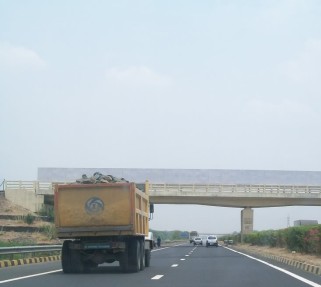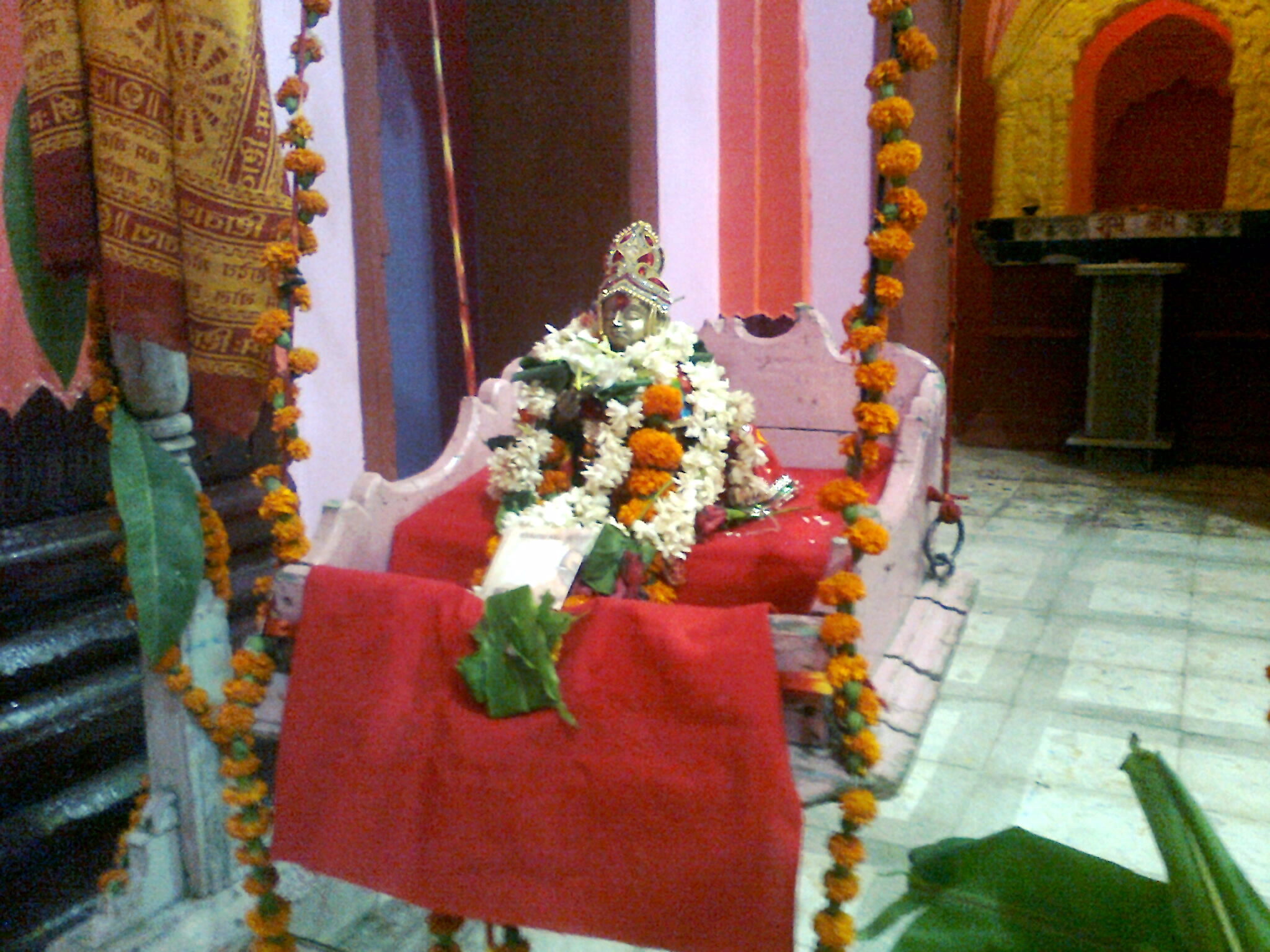|
Kusumba
Kusumba is a small village in the state of Maharashtra, India. It is located in the Dhule taluka of Dhule District in Maharashtra at dhule- sakri road on Gujarat-Nagpur highway. Location Kusumba village is located on the riverbank side of river Panzra. National Highway number 6 ( NH-6) which starts from West End Hajira (Gujarat) and ends to East End Kolkata (West Bengal) passes through Kusumba Village. The distance of Kusumba village from Dhule city is about 18 km. History The old Kusumba village was located on the river bank of river Panzra which was lost due to the flood that occurred to Panzra river during the years 1864–65. After that the village was relocated to some distance from the river bank and the newly situated village is the current Kusumba Village. The architectural structure of Kusumba village has a cross line road (rach road meets every another road at 90 degrees) like Haddppa Sanskruti designed by Sir Mokshagundam Visvesvaraya. There is a very beaut ... [...More Info...] [...Related Items...] OR: [Wikipedia] [Google] [Baidu] |
Dhule District
Dhule district (Marathi pronunciation: ̪ʰuɭeː is a district of Maharashtra, India. The city of Dhule is the administrative headquarters of the district. It is part of North Maharashtra. The Dhule district previously comprised tracts of land predominantly inhabited by tribal populations. It was then bifurcated on 1 July 1998 into two separate districts now known as Dhule and Nandurbar, the latter comprising the tribal region. Agriculture remains the basic profession in this district. As most parts of the district do not have irrigation infrastructure, cultivation heavily depends on regular monsoons and rainwater. Apart from wheat, ''bajra'', ''jowar'', '' jwari'', or onion, the most favoured commercial crop is cotton. The majority of the rural population speaks Ahirani (a dialect of Marathi), though Marathi is more widely spoken in urban areas. Around 26.11% of the district's population reside in urban areas. The Dhule district is known for producing pure milk. Milk cat ... [...More Info...] [...Related Items...] OR: [Wikipedia] [Google] [Baidu] |
National Highway 6 (India)(old Numbering)
National Highway 6 & Economic Corridor 1 (EC1) (commonly referred to as NH6), was a National Highway in India that has been separately designated under the new national highway numbering system. It was officially listed as running over from Surat to Kolkata. The route was also known as Asian Highway 46 (AH46) & Mumbai - Kolkata Highway and Great Eastern Highway. NH6 ran through Gujarat, Maharashtra, Chhattisgarh, Odisha, Jharkhand and West Bengal state in India. The highway passed through the cities of Surat, Dhule, Jalgaon, Bhusaval, Malkapur, Akola, Amravati, Nagpur, Bhandara, Rajnandgaon, Durg, Raipur, Mahasamund, Sambalpur, Kharagpur, Kolkata. New numbering As of 2010 notification from Ministry of Road Transport and Highways, old NH 6 has been renumbered as follows. * Hajira - Deogarh section is part of new National Highway No. 53 * Deogarh - Kharagpur section is part of new National Highway No. 49 * Kharagpur - Kolaghat - Kolkata section is part of new Nat ... [...More Info...] [...Related Items...] OR: [Wikipedia] [Google] [Baidu] |
States And Territories Of India
India is a federal union comprising 28 states and 8 union territories, with a total of 36 entities. The states and union territories are further subdivided into districts and smaller administrative divisions. History Pre-independence The Indian subcontinent has been ruled by many different ethnic groups throughout its history, each instituting their own policies of administrative division in the region. The British Raj mostly retained the administrative structure of the preceding Mughal Empire. India was divided into provinces (also called Presidencies), directly governed by the British, and princely states, which were nominally controlled by a local prince or raja loyal to the British Empire, which held ''de facto'' sovereignty ( suzerainty) over the princely states. 1947–1950 Between 1947 and 1950 the territories of the princely states were politically integrated into the Indian union. Most were merged into existing provinces; others were organised into ... [...More Info...] [...Related Items...] OR: [Wikipedia] [Google] [Baidu] |
Khandeshi Languages
Khandeshi is a language spoken in the Maharashtra state of India. It is spoken in the Khandesh region (Districts Dhule, Jalgaon and Nandurbar ��ुळे, जळगाव आणि नंदुरबार wedged between the territory of Bhili and that of Marathi. It consists of Khandeshi proper, and the Dangri and Ahirani dialects. The words "Ahirani" and "Khandeshi" are sometimes used interchangeably: Ahirani as the caste-based name (after Ahirs), and Khandesh as the region-based name. Etymology A detailed study of the various etymologies of the word Khandesh appears in the book ''Ahirani Boli'' by Dr. Ramesh Suryawanshi. Ahirani is a major dialect of Khandeshi. It was originally spoken by the Ahirs living in the Khandesh region. It is further divided into region-based sub-dialects such as Chalisgaon, Dhule, Malegaon and Dhule group. Ahirani is spoken in the Jalgaon (except Bhusaval, Jamner, Bodwad and Muktainagar) and Nandurbar, Dhule. Outside Khandesh, it is spoke ... [...More Info...] [...Related Items...] OR: [Wikipedia] [Google] [Baidu] |
List Of Districts Of Maharashtra
Maharashtra is an States and union territories of India, Indian state that was formed on 1 May 1960 with 26 initial District (India), districts. Since then, 10 additional districts have been created, and the state currently has 36 districts. These districts are grouped into six administrative divisions shown below. Regions and Divisions Maharashtra is divided into 36 districts, which are grouped into six divisions. Regions Geographically, historically, politically, and according to cultural sentiments, Maharashtra has five main regions:- * Konkan - ''(Konkan Division)'' * Paschim Maharashtra also known as Desh, Maharashtra, Desh - ''(Pune Division)'' * North Maharashtra - ''(Nashik Division)'' - ''contains Khandesh'' * Marathwada - ''(Aurangabad Division)'' * Vidarbha - ''(Nagpur Division, Nagpur and Amravati Division, Amravati divisions)'' - ''formerly Central Provinces and Berar'' Divisions Districts The table below lists important geographic and demographic parameters fo ... [...More Info...] [...Related Items...] OR: [Wikipedia] [Google] [Baidu] |
Eid Ul-Fitr
, nickname = Festival of Breaking the Fast, Lesser Eid, Sweet Eid, Sugar Feast , observedby = Muslims , type = Islamic , longtype = Islamic , significance = Commemoration to mark the end of fasting in Ramadan , date = 1 Shawwal , date2019 = 4 June (Saudi Arabia and some other countries) 5 June (Pakistan and some other countries) , date2023 = 21 – 22 April , date2024 = 10 – 11 April , celebrations = Eid prayers, charity, social gatherings, festive meals, gift-giving, dressing up, Lebaran , relatedto = Ramadan, Eid al-Adha Eid al-Fitr (; ar, عيد الفطر, Eid al-Fiṭr, Holiday of Breaking the Fast, ) is the earlier of the two official holidays celebrated within Islam (the other being Eid al-Adha). The religious holiday is celebrated by Muslims worldwide because it marks the end of the month-long dawn-to-sunset fasting of Ramadan. It falls on the first day of Shawwal in the Islamic calendar; this does ... [...More Info...] [...Related Items...] OR: [Wikipedia] [Google] [Baidu] |
Balsane
Balsane or Balsana is a village in Sakri Taluka, Dist Dhule, Maharashtra, India. It is known for two shrines, Kanubai Mata Temple and Vimalnath Swami Jain Temple. Nearby village, there are well maintained ancient caves. Thus Balsane becomes an interesting tourist and religious destination. Goddess Kanbai Temple Goddess kanbai is said to be "avatar" of goddess parvati. She is well worshiped goddess in Maharashtra as well as the places where maharashtrians lived. She is said to be wife of "Kanher", "avatar" of God Shiva. This temple was made by Holkar queen. Now-a-days it is preserved by Maharashtra Government. The area around this ancient temple contains two more temples. One of God Shiva and one Of God Surya (Sun). The Surya temple is broken and also the idol of God Surya is broken, The Shiva Temple is in well condition and worshiped by the villagers. Kanbai temple is having three parts inside. Entrance is short and then comes middle hall which is having a number of small t ... [...More Info...] [...Related Items...] OR: [Wikipedia] [Google] [Baidu] |
Raksha-Bandhan
Raksha Bandhan Quote: m Hindi ''rakśābandhan'' held on the full moon of the month of Savan, when sisters tie a talisman (rakhi q.v.) on the arm of their brothers and receive small gifts of money from them. is a popular and traditionally Hindu annual rite or ceremony that is central to a festival of the same name celebrated in the Indian Subcontinent. It is also celebrated in other parts of the world significantly influenced by Hindu culture. On this day, sisters of all ages tie a talisman or amulet called the ''Rakhi'' around the wrists of their brothers. They symbolically protect them, receive a gift in return, and traditionally invest the brothers with a share of the responsibility of their potential care. Raksha Bandhan is observed on the last day of the Hindu lunar calendar month of Shraavana, which typically falls in August. The expression "Raksha Bandhan" (Sanskrit, literally "the bond of protection, obligation, or care") is now principally applied to this rit ... [...More Info...] [...Related Items...] OR: [Wikipedia] [Google] [Baidu] |
Rama Navami
Rama Navami () is a Hindu festival that celebrates the birthday of Rama, the seventh avatar of the deity Vishnu. people from different parts of Jharkhand attended the world famous international Hazaribagh procession organized in the city every year on the occasion of Ram ramnavmi birt anniversary of Rama amid chants of Jai shri ram. Vaishnava tradition of Hinduism. The festival celebrates the descent of Vishnu as the Rama avatar, through his birth to King Dasharatha and Queen Kausalya in Ayodhya, Kosala. This festival is a part of the Chaitra Navaratri in the spring, and falls on the ninth day of the bright half (Shukla Paksha) of Chaitra, the first month in the Hindu calendar. This typically occurs in the months of March or April by the Gregorian calendar. Rama Navami is an optional holiday for government employees in India.Holiday Calendar [...More Info...] [...Related Items...] OR: [Wikipedia] [Google] [Baidu] |
Vijayadashami
Vijayadashami ( sa, विजयदशमी, Vijayadaśamī, translit-std=IAST), also known as Dussehra, Dasara or Dashain, is a major Hindu festival celebrated at the end of Navaratri every year. It is observed on the tenth day in the Hindu calendar month of Ashvin, the seventh month of the Hindu Luni-Solar Calendar, which typically falls in the Gregorian months of September and October. Vijayadashami is observed for different reasons and celebrated differently in various parts of the Indian subcontinent. In the southern, eastern, northeastern, and some northern states of India, Vijayadashami marks the end of Durga Puja, remembering goddess Durga's victory over the buffalo demon Mahishasura to restore and protect dharma. In the northern, central and western states, the festival is synonymously called Dussehra (also spelled Dasara, Dashahara). In these regions, it marks the end of Ramlila and remembers god Rama's victory over Ravana. Alternatively, it marks a reverence for o ... [...More Info...] [...Related Items...] OR: [Wikipedia] [Google] [Baidu] |
Diwali
Diwali (), Dewali, Divali, or Deepavali ( IAST: ''dīpāvalī''), also known as the Festival of Lights, related to Jain Diwali, Bandi Chhor Divas, Tihar, Swanti, Sohrai, and Bandna, is a religious celebration in Indian religions. It is one of the most important festivals within Hinduism where it generally lasts five days (or six in some regions of India), and is celebrated during the Hindu lunisolar months of Ashvin (according to the amanta tradition) and Kartika (between mid-October and mid- November).''The New Oxford Dictionary of English'' (1998) – p. 540 "Diwali /dɪwɑːli/ (also Diwali) noun a Hindu festival with lights...". It is a post-harvest festival celebrating the bounty following the arrival of the monsoon in the subcontinent. Diwali symbolises the spiritual "victory of light over darkness, good over evil, and knowledge over ignorance".Jean Mead, ''How and why Do Hindus Celebrate Divali?'', The festival is widely associated with Lakshmi,Suzanne Barche ... [...More Info...] [...Related Items...] OR: [Wikipedia] [Google] [Baidu] |

.jpg)
.jpg)



